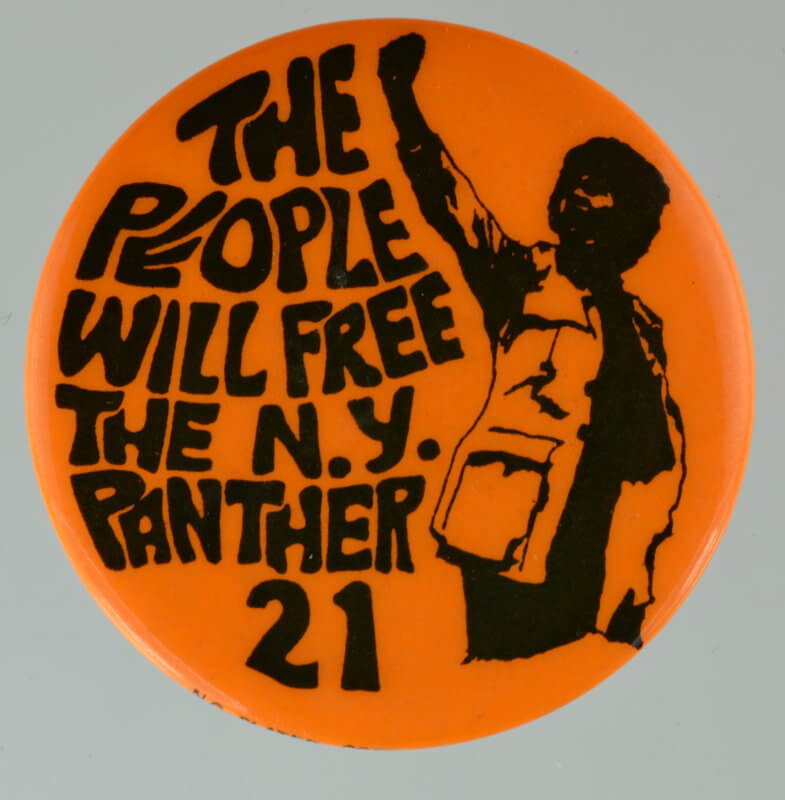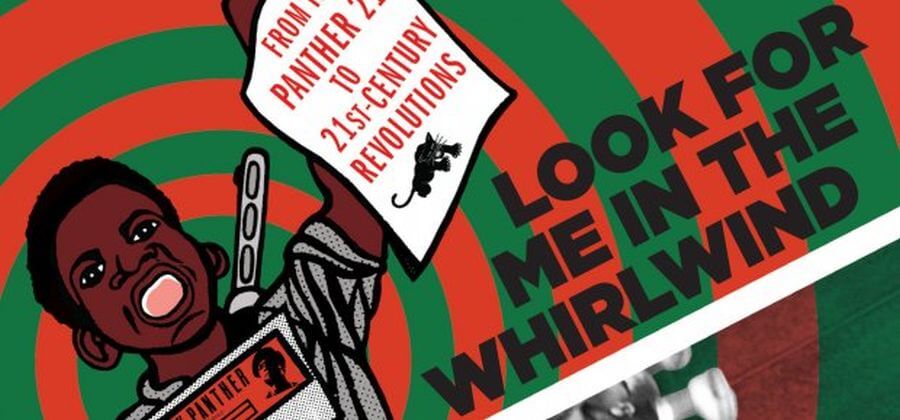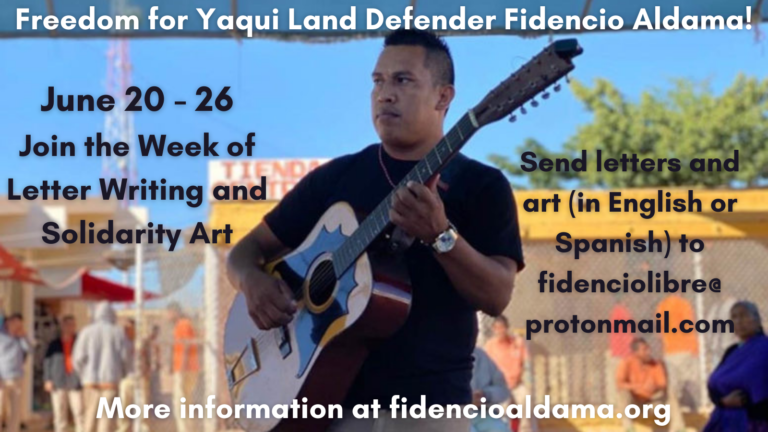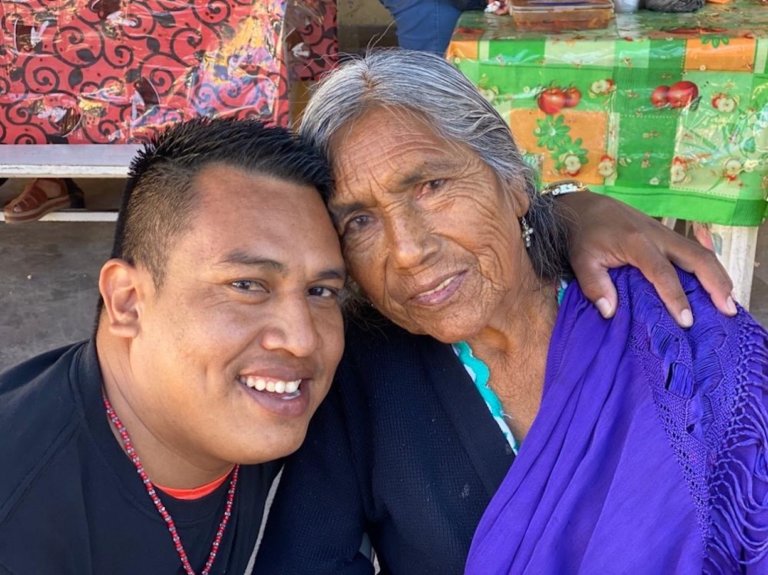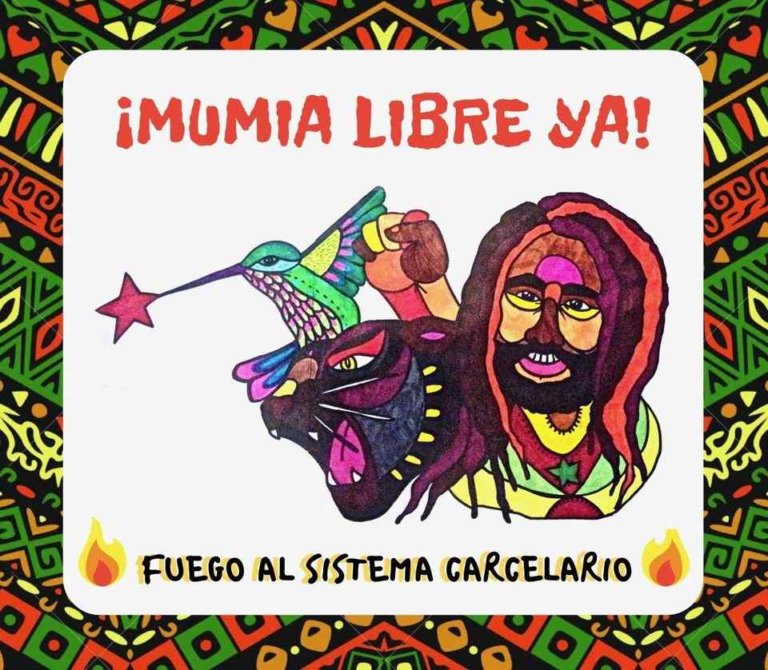Look for Me in the Whirlwind: From the Panther 21 to 21st Century Revolutions. Sekou Odinga, Dhoruba Bin Wahad, Shaba Om, Jamal Joseph. Ed. dequi kioni-sadiki and Matt Meyer. Foreword Jamil Al-Amin. Afterword Mumia Abu-Jamal. (Oakland: PM Press. 2017)
Review by carolina saldaña
At 5 am on April 2, 1969, hundreds of FBI, CIA and NYC police agents armed with shotguns, bullet-proof vests and a shoot-to-kill attitude broke down the doors of dozens of houses, apartments and offices to serve arrest warrants on 21 key members of the New York City Black Panthers. According to the absurd accusations, based on information provided by three infiltrators, these men and women had conspired to blow up schools, department stores, police precincts and the New York Botanical Gardens. It was the longest trial ever held in the city at that time.
Two years later, on May 13, 1971, the Panther 21 were acquitted of all charges after only 45 minutes of jury deliberation.
Originally published in 1971, Look for Me in the Whirlwind: The Collective Autobiography of the New York 21, written in prison, emerges anew with additional texts that point to the relevance of this experience for the struggles of this century. Here we find poems, stories, analyses, eulogies and songs never or rarely seen before.
Dedication
This book published in 2017 is dedicated to New Afrikan political prisoner of war Sundiata Acoli, a mathematician, computer analyst, member of the Black Panther Party in Harlem and New York Panther 21. At the age of 81, he is the only member of the 21 still in prison.

Sundiata Acoli is an inspiration for the generations of the past, present and future because of his undying love for the people, academic brilliance, and a smile that has not been erased during decades of torture.
The authors and editors of this book pay tribute to this comrade held in the dungeons of the imperial prison system where the defense against genocide is considered a crime.
They ask that “if one word or paragraph or section of this book moves any reader a little bit to act in his support this year, please mention him at a dinner, tell his story to somebody, take information about him to an event, make a donation, join the campaign for his immediate freedom.”
In the Foreword to the new edition, Jamil Al-Amin (H. Rap Brown), says: LOOK FOR ME IN THE WORLD…
…He who excuses himself, accuses himself…
We became old at a young age
in a world when justice and law
are two different conversations.
In the Introduction, Shaba Om tells us to LOOK FOR YOURSELVES.
“It became clear after our long trial and acquittal that the real conspiracy was on the part of the police and the U. S. government”. Their aim? “To disrupt and destroy the activities of a central branch of the Black Panther Party… Our 21 was of the 1960s and now we all face the 21st century…Read who you are and be who you are. And look for yourselves ––and discover yourselves–– in the whirlwinds of the 21st century.”
Editor Matt Meyer notes that this book explores an extraordinary page of modern history largely hidden from public view. Even though many progressive people have heard of the Black Panthers founded in Oakland, it’s less likely that they are familiar with the activities of the Panthers in New York.
Now that there’s a resurgence of the Black Liberation Movement with the formation of Black Lives Matter and related groups, more young people know something about Assata Shakur and even wear t-shirts that say, “Assata Taught Me.”
It’s also true that millions love Tupac Shakur’s rap music and thanks to his song, “Dear Mama,” know that his mother Afeni Shakur was a Black Panther. Unfortunately, many have only heard that she struggled with an addiction to crack and know nothing of her role in the trial of the Panther 21 or her work in Black Panther Party programs.
And how many people can tell you the life stories of Lumumba Shakur, Jamal Joseph, Sundiata Acoli, Dhoruba Bin Wahad, Sekou Odinga, Joan Bird and Kuwasi Balagoon? They were all part of the 21 Panthers of New York.
Meyer contends that at a time when an overextended empire is in a deep crisis, intent on crushing all resistance with increasingly militarized police forces, it’s crucial to hear the reflections, ideas and proposals of these comrades. They bring us into this century with the imperative put forth by Assata Shakur: “It is our duty to fight for our freedom. It is our duty to win.”
Editor dequí kioni-sadiki reminds us that J. Edgar Hoover ordered the FBI to destroy the Black Panther Party by means of a secret counterinsurgency program, COINTELPRO. She explains that the 21 New York Panthers each faced 186 charges and sentences of more than 300 years. The bail for each one was set at $100,000 dollars. Their trial was never about justice or protecting citizens from those who allegedly conspired to kill them. In her opinion, Hoover and his henchmen didn´t have the slightest intention of losing this trial, but did, in fact, lose it in their own courts and in the eyes of the people. What they did accomplish, however, was the disruption and destruction of a large part of the work of the Bronx-Harlem Panthers by taking their members out of the communities.
She asks: “What was it about the Black Panther Party which so challenged the capitalist power structure that the organization had to be neutralized?” Was it their principle that Black people have the right to struggle for justice, self-determination and liberation? Was it because their organization was rooted in the Black radical tradition of self-defense and armed resistance to white violence? Was it their revolutionary commitment to defend and serve their communities with breakfast for children programs, free health clinics, housing campaigns, and programs to aid people harmed by domestic violence, among many other things?
In exploring possible answers, dequi kioni-sadiki asserts that the practice and legacy of the Panthers are a source of tremendous power and potential for today’s struggles.
She reminds us that the struggle continues to free political prisoners who are still locked up after spending decades behind bars. These include Sundiata Acoli, Jalil Muntaqim, Herman Bell, Veronza Bowers, Imam Jamil Al-Amin, Mutulu Shakur, Janine Africa, Mike Africa, Janet Africa, Eddie Africa, Debbie Africa, Delbert Africa, Chuck Africa, Robert Seth Hayes, Russell Maroon Shoatz, , Kamau Sadiki, Ed Poindexter, Mumia Abu-Jamal, Kenny “Zulu” Whitmore, Joe-Joe Bowen, Romaine “Chip” Fitzgerald, Ruchell Magee, Kojo Bomani Sababu, Fred Muhammad Burton, Richard Mafundi Lake, Leonard Peltier, David Gilbert, Jaan Laaman and Tom Manning, among many others.
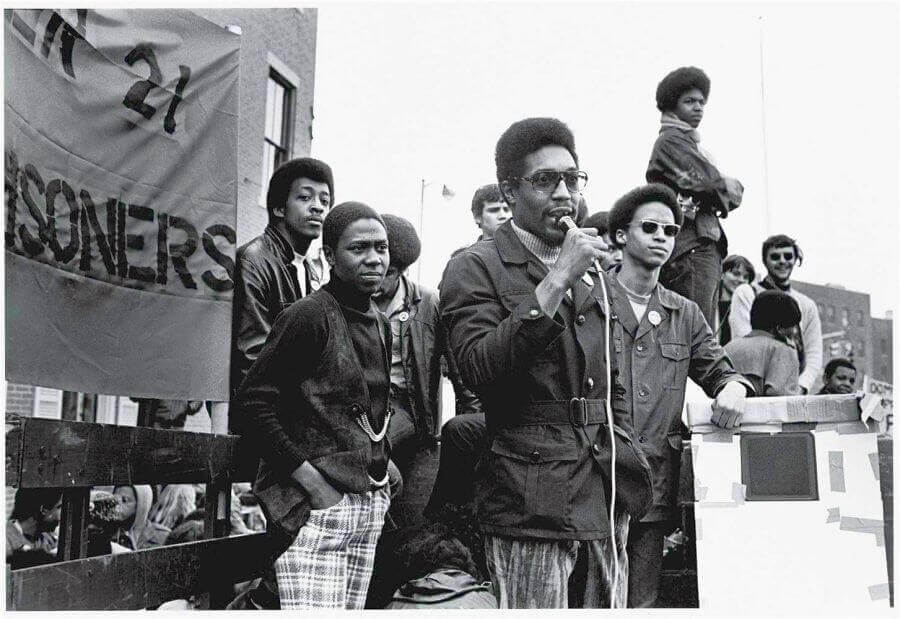
Who were the Panther 21?
Two women –Joan Bird and Afeni Shakur- and 16 men: Michael “Cetewayo” Tabor, Alex “Katara” McKeiver, Curtis “Doc” Powell, Sundiata Acoli (Clark Squire), Ali Bey Hassan, Lonnie Epps, Lumumba Shakur, Lee Berry, Kuando Kinshasa, Shaba Om, Baba Odinga, Dhoruba Bin Wahad, Jamal Joseph, Bob Collier, Kuwasi Balagoon, and Richard “Nine” Harris, plus those who avoided capture: Sekou Odinga, Thomas Berry, and Larry Mack.
Their ages ranged from 18 to 34 at the time of the trial. Most were from the North of the country, a few from the South. Many came from poor, single-parent families while a few of their parents had a stable working-class income. Some had little formal education and others had university degrees. Some hustled on the streets at one time or another, and others had regular jobs. Many spent time in the armed forces. Some traveled afar, while others never left their own ghettos. Some worked in health, education and housing projects. Some were members of gangs in their youth. Some had problems with drugs. Some spent time in jail. Some were directly influenced by Malcolm X. Some became members of the Black Liberation Army. Some gravitated towards the Republic of New Afrika. Many were musicians, poets, teachers, historians and political analysts.
Eventually the charges were dropped against eight of the Panther 21, leaving thirteen on trial. Kuwasi Balagoon and Nine were already in prison in New Jersey under other charges, but they contributed texts to the project. After several months, Dhoruba Bin Wahad, Michael “Cetewayo” Tabor, Afeni Shakur and Joan Bird were released on bail and did speaking tours on behalf of the rest.
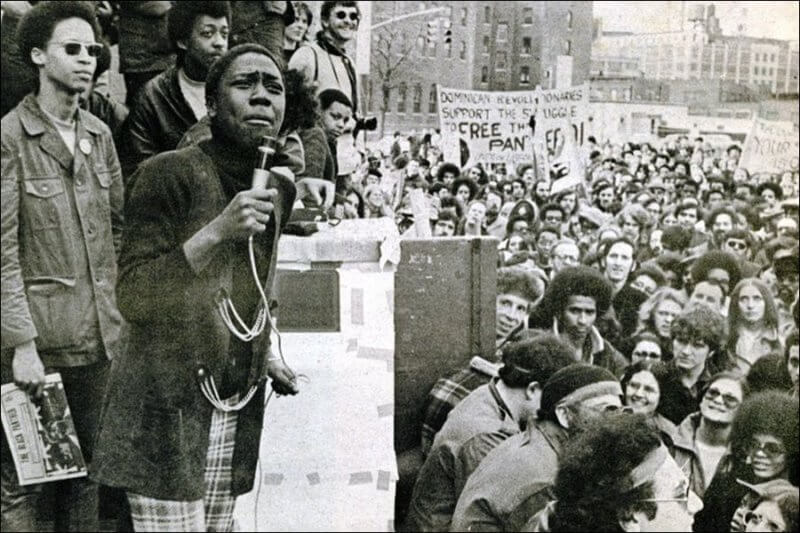
Afeni Shakur played a decisive role by acting as her own lawyer and winning the freedom of all 21 Panthers. In a collective eulogy to honor her transition, Sekou Odinga, Dhoruba Bin Wahad and Bilal Sunni Ali say that despite the image of her created in the news media, Afeni was “a revolutionary leader and spokesperson for the Black Panther Party. Afeni’s real historical legacy and ultimately the celebration of her life depends on how we, the living, perceived that life…Afeni was one of us, one verse in our generational bio-story…We love you, dear sister Afeni. Although you are gone, you will never be forgotten.”
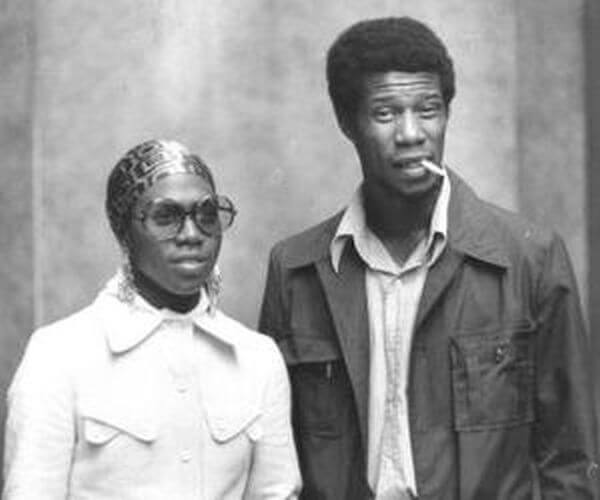
Those who were charged with other offenses afterward and spent long years in prison were Sundiata Acoli (45 years), Sekou Odinga (33), Dhoruba Bin Wahad (19), and Jamal Joseph (10). Those who contributed the Foreword and the Afterword, Jamil Al-Amin (H. Rap Brown) and Mumia Abu-Jamal, respectively, were not part of “the 21”, but are still held in prison on trumped up charges.
Sundiata Acoli: His poems and articles on the Black Panther Party and the New Afrikan Prison Struggle.
After being declared not guilty in the case of the Panther 21, Sundiata went back to prison two years later, condemned to life in prison ¡plus 30 years! for surviving a police ambush on the New Jersey Turnpike on May 2, 1973. His comrade Zayd Malik Shakur was killed, while Sundiata and Assata Shakur were imprisoned. Assata escaped in 1979 with the help of her BLA comrades and received asylum in Cuba.
Now 81 years old, Sundiata has still not been released. The judge who sentenced him was right about one thing: Sundiata Acoli is a died-in-the-wool revolutionary. Now, more than ever, this man with an entire life of struggle, this poet, this brilliant historian must be free.
In his brief history of the Black Panther Party, Sundiata analyzes both the positive and negative contributions of the group to the Black Liberation Movement. And in his detailed history of the New Afrikan Prison Struggle, he explains:
We use the term “New Afrikan” to define ourselves as an Afrikan people who have been forcibly transplanted to a new land and formed into a “New Afrikan” nation in North America. But our struggle behind the walls did not begin in America… The Afrikan prison struggle began on the shores of Afrika behind the walls of medieval pens that held captives for ships bound west into slavery.
Sundiata recalls that with the activity of the Student Nonviolent Coordinating Committee (SNCC), the Revolutionary Action Movement (RAM), the Black Panther Party (BPP), the Republic of New Afrika (RNA), the Black Liberation Army (BLA), and other organizations in the 60s and 70s, there were massive arrests, and these groups carried their ways of thinking and acting into the prisons. They sparked demands for better conditions, access to education, newspapers, libraries, health care, contact visits, vocational training and an end to repression, among many others. And they initiated actions that ranged from telephone campaigns and legal claims to hunger strikes and rebellions. They won certain changes and broader community support at that time.
Assata Shakur, who has worked tirelessly to gain freedom for Sundiata and other political prisoners, dedicated her poem to him excerpted here.
…We remember your smile…
We love your smile
We need your smile…
We got to free that smile
That freedom smile
So we can all smile again.
Sekou Odinga: Land and Independence
Sekou Odinga says that the case of the Panther 21 has been an important factor in the movement of the New Afrikan people for land and independence. It was one of the first political cases with a large number of Black radical prisoners and called public attention to their ideas and activities. It ended in a legal victory that was a people’s victory. Yet for the State it was important to get the Panthers off the streets and disrupt the revolutionary work they were doing. In this, they were successful.

Sekou tells us that he worked with the Panthers in the Bronx and Harlem and later entered the autonomous and semi-autonomous units of the BLA, whose members thought it was necessary to have a potential for retaliation ––“that there should be some consequences for the actions of the police and the government.” They understood the need for a clandestine capacity in order to act. Sekou was charged and convicted of going into the Clinton prison in New Jersey and bringing Assata Shakur out. He mentions that it would have been very difficult to do that if pictures of him in public activities had appeared in the news.
Now that he finally got out of prison after 33 years, he is working publicly for the freedom of all political prisoners and especially those of the New Afrikan movement.
His message to young people today? “Organize, organize, organize! Study your history ––ancient and modern… And remember this. We can’t get freedom without land and Independence.”
Dhoruba Bin Wahad: Assata Shakur and the Defense of Political Prisoners under New Age Imperialism
In a series of articles in the new book, Dhoruba Bin Wahad analyzes some of the problems that have arisen regarding the defense of political prisoners.
Their defense is now made more difficult by the international situation. The Black Panther Party was founded at a time of fierce struggles for independence and national liberation in Africa, Asia and Latin America and formed ties of mutual solidarity with many of the forces involved. But that world no longer exists. In his essay entitled “New Age Imperialism” Dhoruba argues that in Africa, “global economic integration, as defined by the developed industrial economies, represents the highest form of neocolonialism to date. It is imperialist by definition because of its wholesale incorporation of and cooptation of post-colonial, progressive ideas.” Instead of encouraging Pan-African interdependence, new age imperialism fosters greed, individualism and the selfish acquisition of power.
One thing necessary in today’s movements is the study of programs of repression that were illegal in the past, but that are now officially incorporated into “the fight against crime.” In his piece entitled “Urban Police Repression,” Dhoruba shares information that was revealed in fighting his own case and that came to light in the cases of Assata Shakur and other activists and guerrillas. While a fair amount of public information is available on COINTELPRO, little is known about two similar programs implemented in New York: NEWKILL and CHESROB.
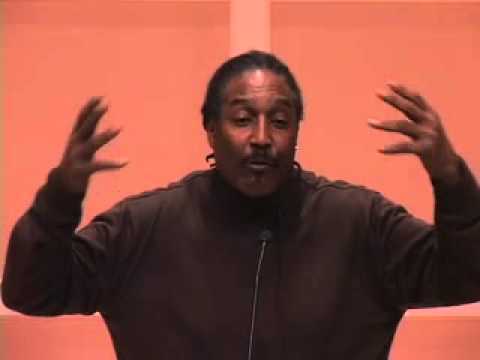
In his reference to the FBI labeling Assata Shakur as a “terrorist,” Dhoruba says that many groups and individuals have voiced their support for her, but they mistakenly emphasize her innocence to reject that label. Some support her as an exceptional woman, a kind of “Black Madonna,” disconnected from her role as an activist, freedom fighter and soldier in an anti-imperialist and anti-racist movement. Although Dhoruba asserts that her lawyers must refute charges against her with facts, he insists that politically, the question of her innocence is irrelevant. It is necessary to defend her in the context of the criminalization of the Black Liberation Movement to which she belongs. What is needed, he says, is a mass campaign to free all political prisoners, regardless of their legal situation.
Jamal Joseph: Man-Child in Revolution Land
The youngest member of the New York Black Panthers talks about his days in the organization. “I thought the only thing we had to do was free Huey and he would lead us to the revolutionary promised land.” Of course it was necessary to prepare people for the revolution, says Jamal, and that’s why he joined in the work of organizing tenants, students and health workers. He and the other Panthers stopped the police from throwing entire families out into cold weather, took over hospitals and turned them into “people’s clinics,” gave classes during teacher strikes that they considered to be against the good of the community, escorted and took food to elderly people, and resolved disputes and fights in the community with no help from the police.
“Being a Panther meant working in the community every day in concrete action programs—not just using words and slogans,” he says. “Freedom to a hungry person is a meal…Freedom to a homeless person is a warm, dry place to sleep. It’s why the Panther free breakfast program remains one of our greatest achievements.”
Bilal Sunni Ali: Lumumba Shakur and the Most Notorious Black Panthers
The great sax player tells that he met Lumumba Shakur through his mother-in-law, Mariamne Samad, a teacher of African culture in the community. Her daughter Sayeeda married Lumumba and introduced them. He also met his father, Salahdeen Shakur, a close companion of Malcolm X who often traveled to Africa and supported the Black Panthers. Through him, Bilal learned about revolutionary Pan-Africanism and got interested in his internationalist perspective. Together, they studied the books of Malcolm, Mao Tse Tung and Franz Fanon and respected the OAAU, founded by Malcolm X.
Bilal says that after he joined the Black Panther Party, he recruited Lumumba and Sekou Odinga. Then he had to disappear. He returned in 1972, when Lumumba was working with the National Committee in Defense of Political Prisoners. This led him to work with people of the Republic of New Africa. They went to live in New Orleans and worked with the organizers of the Jazz and Heritage Festival there. Lumumba was going to go with his father on a trip to Ghana, but he was killed before their travel date. This happened just a few days before the arrest of Mutulu Shakur, who was accused of conspiring to free Assata Shakur, among other actionsBilal says that Lumumba will always be remembered as “the leader of the most notorious chapter of the Black Panther Party, as a person who was anti-drug, who always supported the Black Liberation Army, and who rallied people to support liberation.”
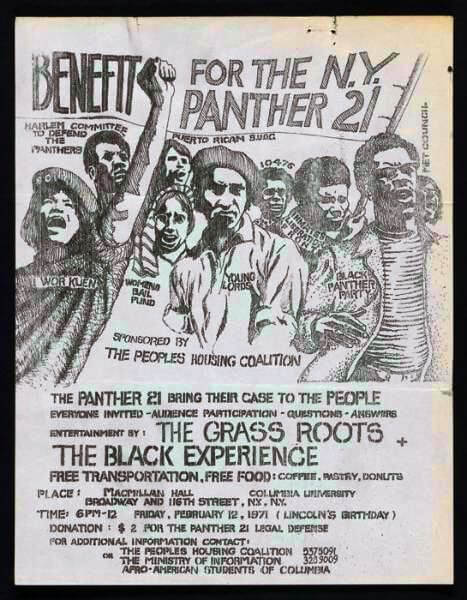
LOOK FOR ME IN THE WHIRLWIND (1971)
THE COLLECTIVE AUTOBIOGRAPHY OF “THE NEW YORK 21”
Look for me in the whirlwind or the storm, look for me all around you, for, with the grace of God, I shall come and bring with me countless millions of Black slaves who have died in America and the West Indies and millions more from Africa to aid you in the fight for Liberation, Freedom and Life.
– Marcus Garvey
The new edition of the book includes the original text written by “the 21” in prison. In this review, the following pages contain comments on only a few extracts from the many compelling testimonies that make up the collective autobiography.
North and South
Although most of the Panther 21 were born in the northern states of New York, New Jersey or Massachusetts, Afeni Shakur was born in North Carolina; Sundiata Acoli in Vernon, Texas; Kuwasi Balagoon in Lakeland, Maryland; and Baba Odinga in the Caribbean country of Antigua. Some of the Panthers from the North spent days, months or years in Southern lands.
In the South, racism was completely out in the open. While walking down the street, only whites could walk in the shade, and it was common to see signs that said “no dogs or negroes allowed here.” KKK members and other racists often drove through the Black communities, shouting the worst kind of insults and throwing rocks or trash at people. “I never called it discrimination or prejudice,” says Afeni. “I called it hate, and that’s what it was.”
Kinshasha remembers Clayton, a young guy who went to visit in New York, where he stopped accepting the racist violence had grown up with. But he wished he had been able to convince Clayton not to go back to Georgia. He heard that when he did go back with his new attitude, he was lynched and castrated for touching, or maybe just looking at, it’s all the same, a young white girl.
In the small town of Vernon, Texas, Sundiata Acoli was once attacked by boys in the white section of town and threw a rock to defend himself. The mother of one the boys threatened him, but Sundiata reasoned that if he told his mother, she would go over to take up for him and would end up getting arrested. “At the age of five or six,” he said, “I had a diploma in the ABCs of survival.”
In the North, poverty, gangs and drugs were the main arms used to destroy the Black community. “In the ghetto,” says Katara, “you learn at an early age who the enemy is –the cops.”
Ali Bey Hassan was present during the rebellion in Newark, Nueva Jersey, in the summer of 1967. He remembers seeing many Black people shot down in cold blood with no arms to defend themselves.
The family
The family life of “the 21” varied. Some lived with their mothers, aunts or foster parents, as Jamal Joseph did. In one house where he was staying he was so hungry that he cried for food. After several changes, he formed a supportive relation with his new grandparents, “Noonie” and “Pa Benjamin.”
Shaba Om remembers that his grandmother in North Carolina always inspired him by telling him about how Mother Nature and Father Time were in love with each other and how one couldn’t live without the other. She always advised him to be independent.
In several cases, the mothers of the Panther 21 cleaned houses to help their children live better. Joan Bird’s mother, for example, was thus able to pay for tap, ballet and acrobatics classes for her daughter.
Kuwasi Balagoon never went hungry while his parents worked constantly, showing their white workmates certain skills for which they were promoted to higher paying jobs. His grandmother swore that there would be no Three Little Pigs or Humpty Dumpty in their house. Her orders nourished the rebellious nature of young Kuwasi, who one day climbed up on top of the playground set, tied a towel around his neck that became his Superman cape and jumped out into the sky.
Kinshasha feels that he inherited a lot of strength, ability and courage from his parents, who made it a point to give him a broad understanding of life. They gave him piano lessons and he once played at Carnegie Hall. When he was five years old, his dad took him to a “riot” so that he would understand what people were rebelling against. When he finished the seventh grade, he scored 98 on a placement test, only to be accused of cheating.
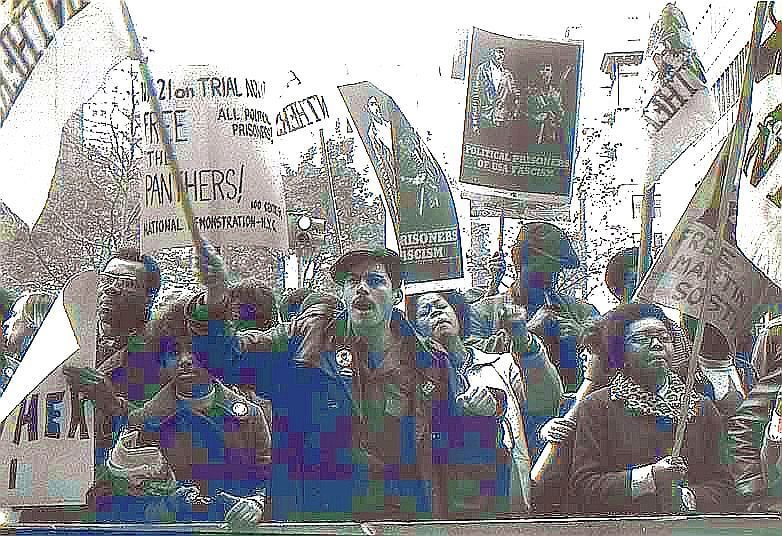
Ali Bey Hassan lived in a situation of extreme poverty with his mother, who worked as a nurse, and often with several other relatives in a single room. His mother was known in the community as being good at fighting when she needed to defend herself. Once she argued with a cop who hit her on the head. She laid little Ali down in the snow, kicked the cop’s ass, took his club, badge and pistol, then picked up her baby and walked away.
While some adults taught their children to passively accept violence to keep then from dying young, others showed theirs how to defend themselves. Once when Lumumba and Zayd Shakur were attacked with rocks by racists in Portsmouth, Virginia, they fought with them and won. When they got home, their aunt Rita asked them what would have happened if they hadn’t fought. “You would have beaten us until we could not sit down for days,” they said. “That’s right,” said Aunt Rita. “In our family when we are right, we make a firm stand on our principles.”
School
Baba Odinga was required to sing songs about God in his school, but he was more interested in the Obeah man, who walked through his barrio. His mother hated the Queen of England and forbade him to sing songs to her. The only subjects that interested him in school were those about slave rebellions.
Bob Collier was ashamed to go to school because the other students laughed at him for wearing patched clothes. In 1959, he heard Malcolm X speak and returned to school to get his high school diploma. He did well on his university entrance exams and attended seminars at the same time that he mopped floors to make a living.
Sundiata Acoli’s mother worked hard cleaning houses so that he and his sister would have a chance at a university education. With used books from one of the families she worked for, they both learned the alphabet before they started first grade. Sundiata always made good grades and advanced quickly. He finished high school at the age of 15. But he didn’t like the fact that they only taught him “the American dream,” “private enterprise,” “blind justice,” “wild Indians” and “happy slaves. He got a university education and then a job at NASA.
Curtis “Doc” Powell’s parents also worked hard to give their son a college education. In spite of many incidents of discrimination, Doc got his Ph.D and did important work on his theory about the mechanism of cancer. One time when he was working in the early morning hours, he realized that water was pouring into the lab. He was able to cut it off and save all the equipment. Nevertheless, a white lab technician was given credit for what he did.
Gangs
In the 1950s, it was almost impossible to be young and not be in a gang in the barrios of New York and other cities. Some were huge, with more than 10,000 members. Several members of “the 21” had experience in one or more street organizations. Some saw it as a matter of status, others as security issue.
Dharuba (Dhoruba Bin Wahad) says that it was dangerous to go to school if you weren’t a member of a gang. “The unique thing about living in a colony is that you have to seek recognition among your peers, yet still remain anonymous to your oppressor. And the more recognition you gain among your peers, quite naturally, the more you become a focus of some police attention.”
Lumumba Shakur tells us that everybody had a street name: Tombstone, Graveyard, Ghost, Cherokee, Apache, Snake, Killer, etc. His was Shotgun. It was a symbol of masculinity. If you didn’t belong to a gang, you couldn’t get a girlfriend. Animosity was expressed among the members and not against the system. Every year there was a massive gang fight in Coney Island on May 30th. The attitude was “kill a ghost, stick a stone, drown a drop of water. If the brothers and sisters in the gangs ever knew who their real enemy was, the U. S. system would be in danger of collapse, concludes Lumumba.
Drugs
Little by little the Black communities in the North were flooded with heroin, which became the weapon of preference to destroy them.
Dharuba remembers his father as a slick guy who liked to have a good time and brought music into the house. But his taste for drugs lead him to jail many times until he himself came to think that the influx of heroin had destroyed an entire generation of people. Maybe two or three generations, comments Dharuba.
In an excerpt from his autobiography, Michael “Cetewayo” Tabor describes the steps that led him to be a heroin addict from the time he was eleven years old, and how he came to leave the habit. He says that one time when he had begun to inject the drug, some of the dealers of weed in the community were waiting for him when he got home, including his former basketball coach, who had given him the dream of working hard to be able to play in the NBA someday. They took him up to the roof and talked to him hard about the danger of what he was doing to himself. His trainer cried and said “better dead than a heroin addict.” He was part of the faction that wanted to throw Cet off the roof, but the ass-kicking faction won. Cetewayo didn’t decide to drop the habit until later, but he knew he had to leave the community. [An excerpt from his 1969 pamphlet “Capitalism plus Dope Equals Genocide” is included in the book.]
The death of Afeni Shakur’s best friend, Sandra, from an overdose of heroin affected her deeply. But she didn’t blame the addicts.
The armed forces
Several members of “the 21” tell about their experiences in the Army, the Navy or the Marines.
When he was 16 years old, Dharuba joined the Army and was soon named squad leader. His position was taken over by a white racist, however, who criticized him every time his squad showed some military prowess. After constant battles with the authorities, a sergeant finally gave him an undesirable conduct discharge. His Colonel thought it was really unjust and said he would be willing to give him a recommendation to get a job when he got out.
While stationed in Germany, Kuwasi Balagoon and other Black soldiers refused to accept racist violence. They formed a clandestine organization to retaliate every time a white soldier attacked a Black one. The name of the group was “De Legislators,” and their members were De Judge, De Prosecutor, De Executioner, Hanibal and De Prophet. Their most effective tactic was to jump up and come down hard on the face of the aggressor. The role of De Prophet was to predict that a racist would be attacked, go and find him, and attack him. Eventually some Latin, Hawaiian and Indian brothers joined the group and once in a while a white outlaw. The secret of their success? Being careful and being decisive. There was no time to rest after kicking one ass. There were always five more asses to kick, said Kuwasi.
In 1961, Kinshasha was sent to Guatemala to work for the United States Embassy and protect the Marines stationed there. His first stop was Panama. There he ran into a huge march whose main demand was the return of the Canal to its rightful owners. He learned that the majority of people in Panama are Black and saw the embassy personnel as an instrument of US oppression. “In fact, considering what I represented at the time, I really was their enemy,” says Kinshasha.
Kinshasha spent two and a half years in Guatemala. He says, “I entered a country a very apolitical Negro marine and came out a dedicated Black revolutionary.” Although he was part of the enemy armed forces, the people related to him as a Black comrade who had the same oppressor.”
In London, Kuwasi Balagoon felt more committed to Black Liberation. He met people from the Antilles, Africa, Asia and Latin America and joined their brotherhood. Listening to Otis Redding and James Brown, “my soul revived,” he said. It was a time to relax, party, learn, teach and talk about what was happening with Black people all over the world.
Ali Bey Hassan joined the United States Navy in 1955. Even though an official pressured him to choose the Services Division, he insisted on Gunnery. He overheard a white sailor volunteer for Services but the official said, “No, we have a better place for you.” One night Ali went to a club in Portsmouth, Virginia, where B.B. King was playing. After a while he strolled over to the other side of the club and saw that a high barbed wire fence divided the dance floor. On one side the Black people were dancing and having a good time. On the other the white people were just sitting there, not moving. Three or four white women tried to cross the fence, but the cops stopped them. One began to fight with them but they beat her with a club and took her away.
Despite the racial mistreatment that went on in the armed services, most of the Panther 21 had no other way to travel and gain an international perspective firsthand. Nevertheless, Curtis “Doc” Powell, Bob Collier and Sundiata Acoli report that they paid their own expenses to travel to other parts of the world, including Africa, Cuba, Mexico, Jamaica and the countries of Central America, which taught them a lot.
The influence of Malcolm X
In Paris, Curtis “Doc” Powell was doing research in the daytime and playing jazz piano at night. “THEN I MET MALCOLM,” he said. He was coming back from Mecca and knew he was going to die very soon. He knew who was going to kill him: the United States government. “I was heading towards a stage of no alternatives: victory or death,” said Doc. “Malcolm was already there.”
Richard “Nine” Harris Heard Malcolm X give a speech at the Newark Mosque, which inspired him to read and study. After Malcolm was killed, Nine stayed in contact with other followers of his.
Lumumba Shakur says that at Comstock Prison, where he was held in 1962, all the brothers loved Malcolm X. One day his father, Salahdeen Shakur visited him and told him that he knew Malcolm and that he was a genius. They talked about repression in the streets and in the Black communities. Afterwards, Lumumba told the brothers that his Dad knew Malcolm and that he agreed with him, that he was going to change his name to Shakur (the thankful) and that he had to find a strong African name. “Oh, spare us, Shotgun!” answered the brothers, again and again. “Ah, well then, I’m gonna spare you this Muslim bean pie I’ve got,” joked Shotgun. Then they all ate the pie and talked about what his dad had told him.
After the authorities denied Lumumba parole, there was a huge uprising at Comstock prison, and all the leaders were transferred to Attica where they were held in isolation cells.
Self-Defense, Community and Prison Struggles
When Sundiata Acoli heard about the three comrades killed in Mississippi while they were registering people to vote, he went down South, even though he really didn’t think the vote was the best way to make social changes. He took a gun along but didn’t really need it because the sister in the house where he stayed was a strong believer in self-defense. He liked the Organization of Afro American Unity (OAAU), founded by Malcolm X, and supported his stand on self-defense, human rights and international struggle.
Kuwasi Balagoon was working in the struggle for decent housing in Harlem, where he and his comrades held a rent strike to force the authorities to exterminate rats in city buildings. They also held a major demonstration in Congress, which was attacked by the police. The lost their anti-poverty funds, but continued to do the work.
In Newark, Richard “Nine” Harris was working with the Black Man’s Liberation Army. During the 1967 rebellion, six teams from their group participated. None of them appeared on the streets after that. The police were eliminating everybody they saw as a threat, said Nine.
When Lumumba Shakur got out of prison, he and Sekou Odinga joined the OAAU. They felt that male chauvinism kept many members from following Ella Collins after Malcolm X was assassinated and that the programs weren’t being implemented in the Black communities. For several months, they worked in Jamaica Queens to try to make sure Anti-Poverty funds went to the hands of the people, but the majority didn’t agree and called the police.
Joining the Panthers
In June of 1968, Ali Bey Hassan heard Bobby Seale speak in public. “He said what I was feeling, that’s why I joined the Black Panther Party,” he said. Ali studied imperialism and the struggles for self-determination in the world. He liked the Panther’s community meetings.

Katara had heard the Black Panthers use the term “pig,” but he wasn’t sure what they meant by it. He went to a meeting and joined the group. Then he asked, “What is a pig?” Everybody look at him like he was from another planet and then one member gave him a long explanation. He began to participate in meetings to support the rent strike. He felt like there wasn’t a strong response on the part of the people until a brother was arrested by the police at a Malcolm X tribute. Katara went to file a formal complaint and saw that he was accompanied by an army of addicts, dealers and street sisters to make sure nothing happened to him.
In August of 1968, Curtis Powell had his Ph.D and worked at Colombia University in New York. He joined the Black Panthers because he was a “revolutionist” and because he realized that the “American Dream” was built on slavery, force, racism, grand larceny and fascism.”
Shaba Om saw a copy of Ramparts Magazine with a photo of the Panthers on the cover. Then he bought a copy of The Black Panther newspaper. He says that Panther political education classes and the music of John Coltrane led him to stop selling drugs and women’s bodies. “I found out that the love of my life died from heroin… I helped the pigs kill my sister,” he said. With that realization, he changed his name from Lee Roper to Shaba Om.
In 1967, Afeni Shakur saw Bobby Seale speak on the corner of 125th Street and Second Avenue, where, Malcolm, Marcus Garvey, Kenyatta and many others had spoken. In August, Eldridge spoke from another platform. He said, “I dare you to go to the political education class tomorrow.” “I went,” says Afeni. “When they asked who wanted to be a Panther, I raised my hand.” Afeni says that when she met Sekou and Lumumba, it was the first time in her life that she had met men who didn’t abuse women. Afterwards, she married Lumumba. Later Sekou had to live a clandestine life for a while and then went to Algeria. She says: “ I heard that the children over there shout from their windows, ‘¡Sekou, Sekou, Sekou!’ They’re always around the house because they love that man.”
Baba Odinga says that he was on the street in Harlem when a Black man carrying boxes asked for some help. They took the boxes to the Black Panther office and the man asked him if he wanted to help feed some hungry children. He said yes.
Sundiata Acoli was earning a lot of money at NASA but realized that he was deceiving other Black people about the meaning of success in life. He began to look around for an organization that really alleviated the suffering of Black people.
Jamal Joseph joined the Black Panther Party in October of 1968. He had first thought that the group was too extreme, almost suicidal. A friend wanted to investigate what they were doing, and both of them began to go to community meetings. He joined the group and worked in the Brooklyn office, then in the Harlem office, in the afternoons to help find a solution to the rats and cockroaches that infested public housing.
Joan Bird joined the party in September or October of 1968. She had heard about the group’s history on the news media. When a friend invited her to her house, she met people who were working in the Harlem office. She felt that their programs were just what Black people were looking for –something that responded to their basic needs and their right to determine the destiny of the Black community and bring peace. Joan attended university classes at night and did party work during the day. On January 17, 1969, she began to suffer fierce repression. Several cops dragged her out of a car, beat her, stomped on her brutally, and threatened her life and that of her family. At the same time, they started a smear campaign in the press, accusing her of being a witness against the Panthers. One time, the cops hung her upside down by her ankles from a third story window to try to get information out of her. “In the Panthers, what keeps your spirit strong is knowing that you’re willing to die for your freedom,” says Joan.
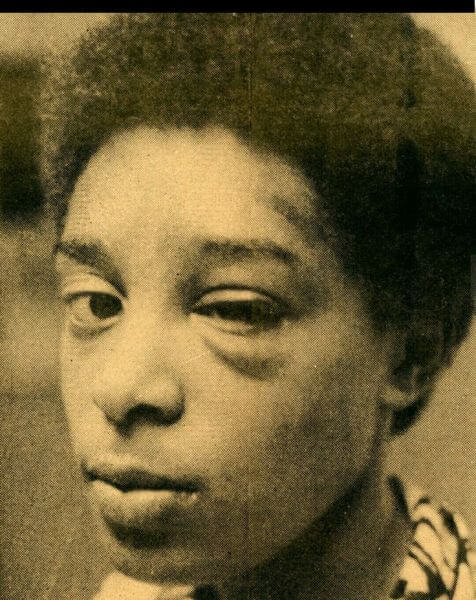
Life in the Women’s House of Detention, NYC
In this segment of the Collective Autobiography, Joan Bird describes in great detail the horrendous conditions in the women’s prison located in Greenwich Village, NYC. From the rats that bite the prisoners to the brutal cavity searches of their bodies by a supposed “doctor,” Joan gives the details of what happens every hour on every floor of the building. On the third floor, for example, the prisoners were not paid a penny for their forced work in the laundry or the sewing room for many years. Then at the beginning of the 70s, when this book came out, they started to earn ten cents an hour on the condition that they couldn’t earn more than $120 a year.
Rebellion in Branch Gardens Prison, Queens, NYC
On October 1, 1970, after the beginning of the trial of the 21 Black Panthers of New York, a rebellion broke out in the prison known as “Branch Queens,” followed by a whole series of rebellions in “The Tombs” in Manhattan and other prisons in Brooklyn and Queens. From the perspective of the prisoners who defined themselves as “prisoners of war (POWs),” Kuwasi Balagoon narrates the conditions of genocide in New York prisons, the actions taken in Branch Queens and the problems and issues of debate during the rebellion.
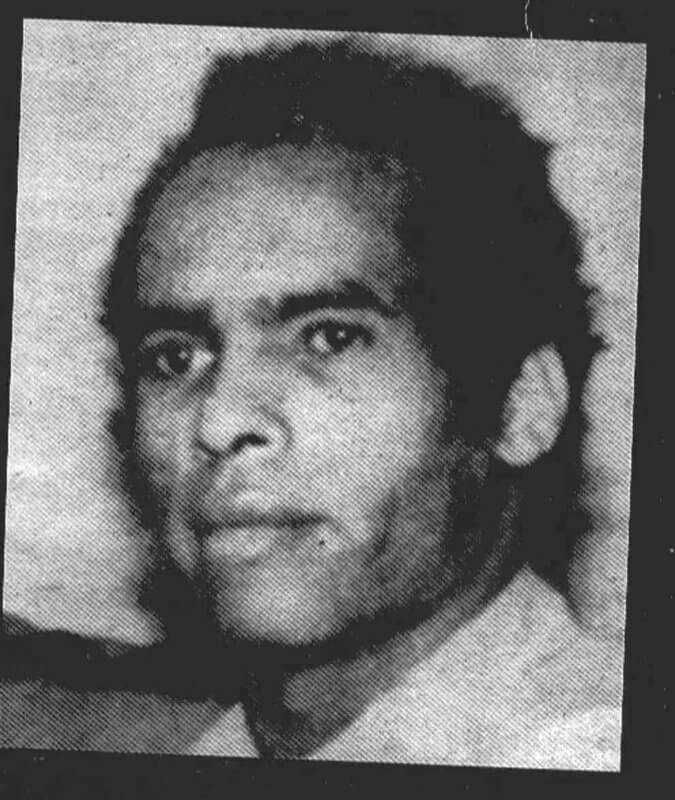
The first day, says Kuwasi, was called “Turnabout Day” the day when a radical, unexpected turn of events took place. That day the guards were captured and locked up while the cells of all the prisoners were opened. The POWs had the keys to all the cells. Maintenance was organized, barricades set up, lookouts designated and all the telephones smashed. Messengers ran from one floor to another, security teams were organized on each floor and a battle plan developed.
There were several problems to resolve. The prisoners in charge of the commissary, for example, served themselves. Others ate too much and others didn’t take their turn at guard duty.
Even so, negotiations started off well. The prisoners let two of the seven hostages go to show their good faith in negotiations. All the demands were reported in the commercial press. The rebellion in The Tombs immediately broke out, and three Supreme Court justices went in to hold hearings. There were a few bail reductions and even a few prisoners released. Demonstrations were held all over the city by the Black Panthers and Young Lords.
Then more serious problems began. There were signs of fear among some of the prisoners. With a massive concentration of police outside Branch Queens, the bicycle-riding Mayor of New York City, referred to by Kuwasi as “Slimy Snake Lindsay of Flim Flam City,” lied to the press, saying that all the hostages were going to be freed and that there would be no reprisals. Some of the negotiators wanted to release all the hostages. Somebody began to sing, “Everybody wants to go up to Heaven, but nobody wants to die.
Kuwasi says that the Panthers and other warriors felt really good about being in the rebellion and were ready to take it to a higher level. They wanted justice for all. Everybody would have to make a decision. Keep the hostages and prisoner bargaining power? Or turn over the hostages and give up the bargaining power, accepting the consequences to come? This is a question that all the prison rebels in Babylon will have to answer over and over again in the future, says the narrator.
A general meeting was held to ask one question: If the pigs attack, are we going to kill the hostages? Here are some of the answers. “Yeah.” “Motherfucking right.” “No, no, no.” “Let’s cut their throats, hang them, set them on fire, and throw them out the eighth floor window.” “We’ll put them up to the window and tell the pigs to stop, and if they keep coming we’ll throw them out one by one.” “I think we have gone far enough. I think we should call a press conference and give the prisoners up.”
Then a vote was taken. Four of the floors said, “Turn them loose,” and three said, “Fight.” The non warriors turned them over.
For the warriors, this was a big let-down, says Kuwasi. “The pain of losing a battle we did not have a chance to fight.” The worst thing was, he said, that some Black prisoners would rather die than kill three pigs. They thought their lives valued less than the lives of three agents of the state.
While the warriors were preparing to resist until the end and take as many cops possible with them, the news came that the pigs were beating some of the prisoners to death in the yard. The warriors used a megaphone to announce it to the public and asked people to get in touch with the lawyers of “the 21” and other responsible public figures. They saw at least one honest news report on TV and later held a meeting with the lawyers.
In the end, they left the jail in a cherry picker, “a pretty way-out way to leave any building,” said Kuwasi. “The people had saved us! All power to the people! We love you!”

In the Afterword, Mumia Abu-Jamal tells us that the book is “like a song…as beautiful as it is wonderful.”
He says that upon reading these stories written in first person, he learned why this disparate group of people had come together.
They joined because the lure of revolution was too strong to shake. They joined because they had once heard Minister Malcolm X speak and he left a vibration of resistance in their blood. They came together because in unity there is strength. They came together because it was the rightest thing they could think of doing. They joined because they wanted to make their lives count for something bigger than themselves. They joined because they could do nothing else. They joined the Black Panther Party because they could not live with themselves if they didn’t.
